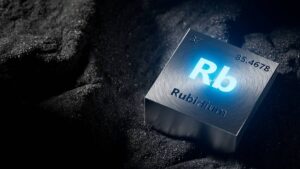With M&A on the horizon, these Canadian lithium plays are keeping busy

These ASX Canadian lithium plays are staying busy. Pic: Getty Images
- Sayona-Piedmont merger could usher in a period of consolidation in Canadian lithium sector
- Prices have bottomed out recently, with players positioning for the next boom
- A number of juniors are staying true to their lithium roots despite price woes
Once a hotbed of activity, the lithium sector in Canada appears to have cooled amidst a prolonged pricing malaise, prompting some to speculate that a round of acquisitions might be due.
Supporters of this theory point to Sayona Mining’s (ASX:SYA) move in mid-November to merge with US-based Piedmont Lithium in an all-stock deal to consolidate its Canadian operations, creating North America’s largest hard rock lithium producer with the means to weather the lithium pricing storm.
The deal, which has come alongside a major injection of capital, will provide some fat to see out the lithium winter at the North American Lithium operations in Quebec, currently producing upwards of 50,000t of spodumene concentrate a quarter.
The marriage will also help Sayona and Piedmont bulk up to develop additional resources in the Abitibi region as well as downstream processing, with Piedmont already securing US Government backing for a proposed plant in Tennessee.
While M&A activity has remained relatively quiet outside of this move, exploration certainly seems to have fallen drastically based on a cursory examination of ASX announcements put out by previously active companies.
ASX Canadian lithium plays staying busy
However, there are still some ASX-listed Canadian lithium plays who are keeping the momentum going in the hopes of emerging stronger at the other end of the downturn.
That success might make them more appealing for takeover might be incidental or an integral part of their planning.
Arizona Lithium (ASX:AZL)
While many junior resource companies are still progressing exploration at their respective projects, Arizona Lithium is already powering its way towards becoming a Canadian lithium producer in 2025 from its Prairie lithium brine project in Saskatchewan, Canada.
The company has completed drilling of wells at three pads and is in the process of carrying out completion work that will enable them to pump out enough lithium-rich brine to produce some 6000tpa of lithium carbonate equivalent.
This is in line with the Phase One estimate in its December 2023 preliminary feasibility study, which estimated that each pad has a net present value of ~US$150m.
Economics are expected to be attractive with the PFS indicating the project would operate at costs of just US$2819/t LCE, with total capex for its first phase of US$290m and long-term pricing of US$21,000/t.
This low cost of operation translates into attractive returns, with the PFS estimating pre-tax net present value and internal rate of return – both measures of a project’s profitability – at US$448m and 23.9% respectively.
Once these pads are producing, the company plans to gradually expand that number to 12 in order to reach steady state production of 24,000tpa LCE with every 6000tpa module being easily replicated.
Prairie currently hosts a contained resource of 6.3Mt LCE and has successfully produced battery-grade lithium carbonate through direct lithium extraction at the ILiad pilot plant.
Green Technology Metals (ASX:GT1)
Exploration is also very much underway at Green Technology Metals’ Seymour and Root projects in Canada’s Ontario province, where it has built a resource rich stronghold.
Seymour, the flagship with a resource of 10.3Mt at 1.03% Li2O, is expected to host a proposed mine and concentrator and has secured some C$5.47m ($6.05m) in Canadian government infrastructure funding for road and bridge upgrades.
Work is underway on a definitive feasibility study aimed at enabling an investment decision early in 2025 alongside permitting and approvals.
The company is also preparing to carry out maiden drilling at the ~109km2 Junior lithium just 20km away that it picked up last year in the belief that it will deliver long-term feed to the planned Seymour concentrator.
Rock chip sampling with grades of up to 5.06% Li2O has successfully extended the 2023 mapped pegmatites by 500m while maiden diamond drilling is imminent.
Over at the Root project, which already has a resource of 14.6Mt at 1.21% Li2O, GT1’s first two deep extension holes returned intercepts of 17.3m at 1.80% Li20 from 611.9m and 16.3m at 1.27% Li20 from 378.3m.
The initial results from the program are encouraging as they indicate significant potential for resource growth.
Remaining holes in this program will be completed by year-end and will be followed by a second phase program of 10 holes totalling 4000m to further define the pegmatite extents uncovered in the 2023 maiden drilling.
Assays from both phases will then be used to book a revised resource estimate.
Patriot Battery Metals (ASX:PMT)
Patriot Battery Metals has the distinction of holding America’s largest lithium pegmatite resource at its Shaakichiuwaanaan project in the James Bay region of Quebec.
Shaakichiuwaanaan has an indicated resource of 80.1Mt at 1.44% Li2O and inferred resource of 62.5Mt at 1.31% Li2O for combined contained content of 4.88Mt LCE.
The company recently completed a ~65,000m drill program to support conversion of more inferred resources into the indicated category along with securing geotechnical, geomechanical and hydrogeological data to support the feasibility study that is currently underway.
Just in early December, it successfully produced battery-grade lithium hydroxide from spodumene pegmatite sourced from the CV5 deposit.
Its feasibility study is evaluating the mining approach and is based around the use of a simple dense media separation processing plant that will deliver average life of mine recovery rates of about 69.5%.
PMT plans to carry out a phase approach for development with the installation of a single 2.5Mtpa processing plant in Stage One and another similar plant to run in parallel in Stage Two.
If any Canadian lithium player is likely to be a takeover target it could be this one, given the scale of the Shaakichiuwaanaan resource. Albemarle took a close to 5% stake at a cost of C$109m in 2023 but let an exclusivity period on establishing a refining JV lapse as the market turned, showing there’s already major interest in the stock led by ex-Pilbara Minerals boss Ken Brinsden.
At just C$375m, larger players are bound to see the potential 400,000tpa producer as undervalued, given it once commanded a valuation close to $2bn.
Filling a critical processing gap
The lithium story in Canada isn’t all about exploration though.
Lithium Universe (ASX:LU7)
While other ASX-listed companies are exploring for rock in the ground, Lithium Universe is primarily focused on closing a gap in the lithium supply chain.
While there is no shortage of projects aimed at finding and producing lithium in North America or making lithium-ion batteries, the key step of converting lithium into battery grade chemicals has almost entirely been left to China.
As trade wars between west and east intensify that’s a major problem, and one LU7 is keen to solve onshore, closing the gap with its planned Bécancour lithium refinery in Quebec, which is projected to produce 18,270tpa of green battery-grade lithium carbonate.
A pre-feasibility study has already estimated that the project could deliver attractive pre-tax net present value and internal rate of return – both measures of profitability – of US$779m and 23.5% respectively.
Capex has been estimated at US$494m with payback in 3.5 years, while operating costs are expected to be US$3,976/t.
The company recently signed a memorandum of understanding that will see chemical logistics company Servitank leverage its expertise in supply chain management and multimodal logistics to support development of Bécancour.
Servitank is currently evaluating various storage solutions at the Bécancour Port terminal, which may facilitate the efficient trucking logistics required to deliver key liquid chemicals and is investigating the process of constructing dedicated storage tanks for specific process reagents.
The Quebec-based logistics company will also assist LU7 with procurement options within the local areas for other dry bulk reagents to meet its specific operational requirements.
At Stockhead, we tell it like it is. While Arizona Lithium, Green Technology Metals and Lithium Universe are Stockhead advertisers, they did not sponsor this article.
Related Topics

UNLOCK INSIGHTS
Discover the untold stories of emerging ASX stocks.
Daily news and expert analysis, it's free to subscribe.
By proceeding, you confirm you understand that we handle personal information in accordance with our Privacy Policy.








